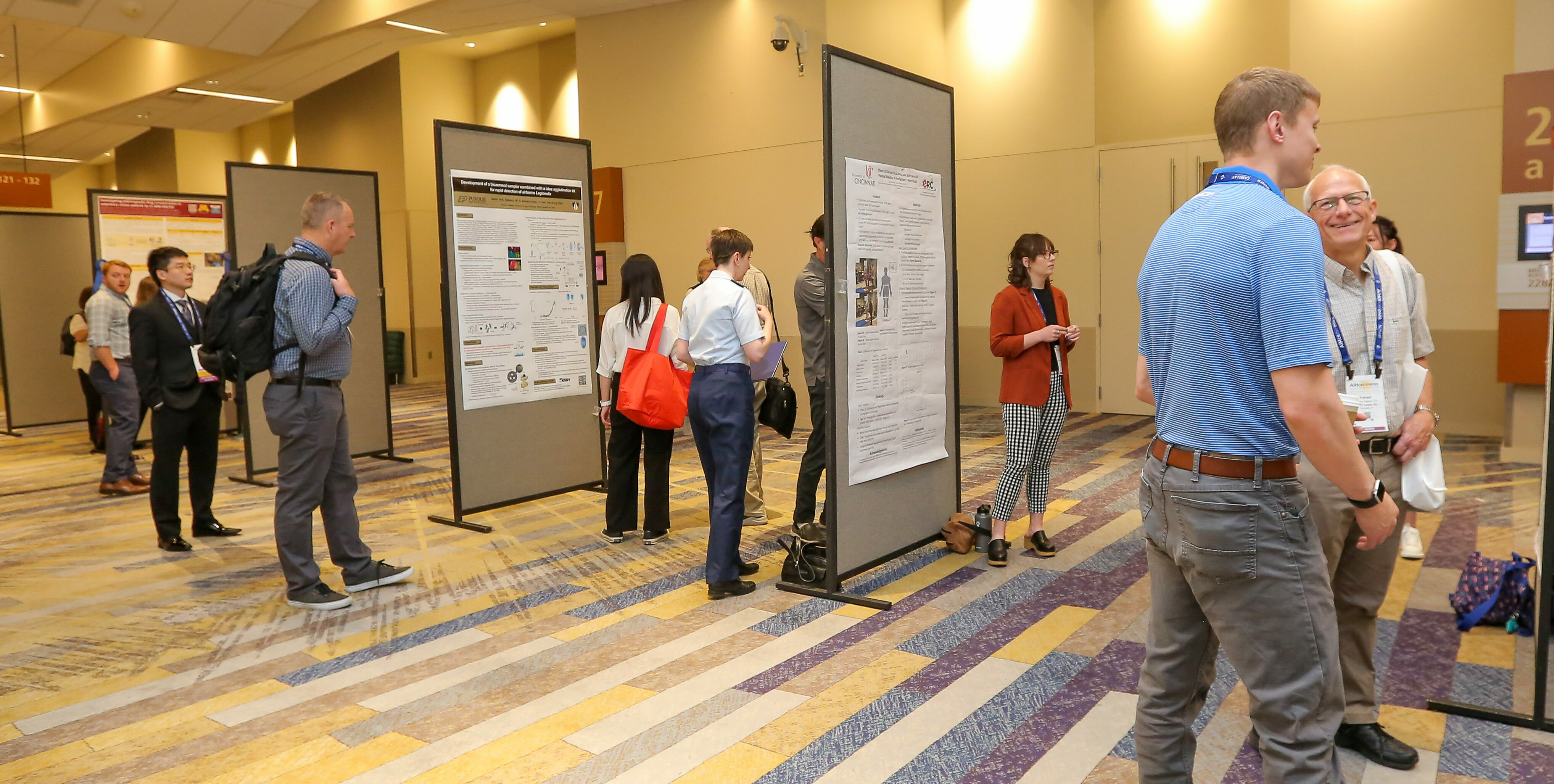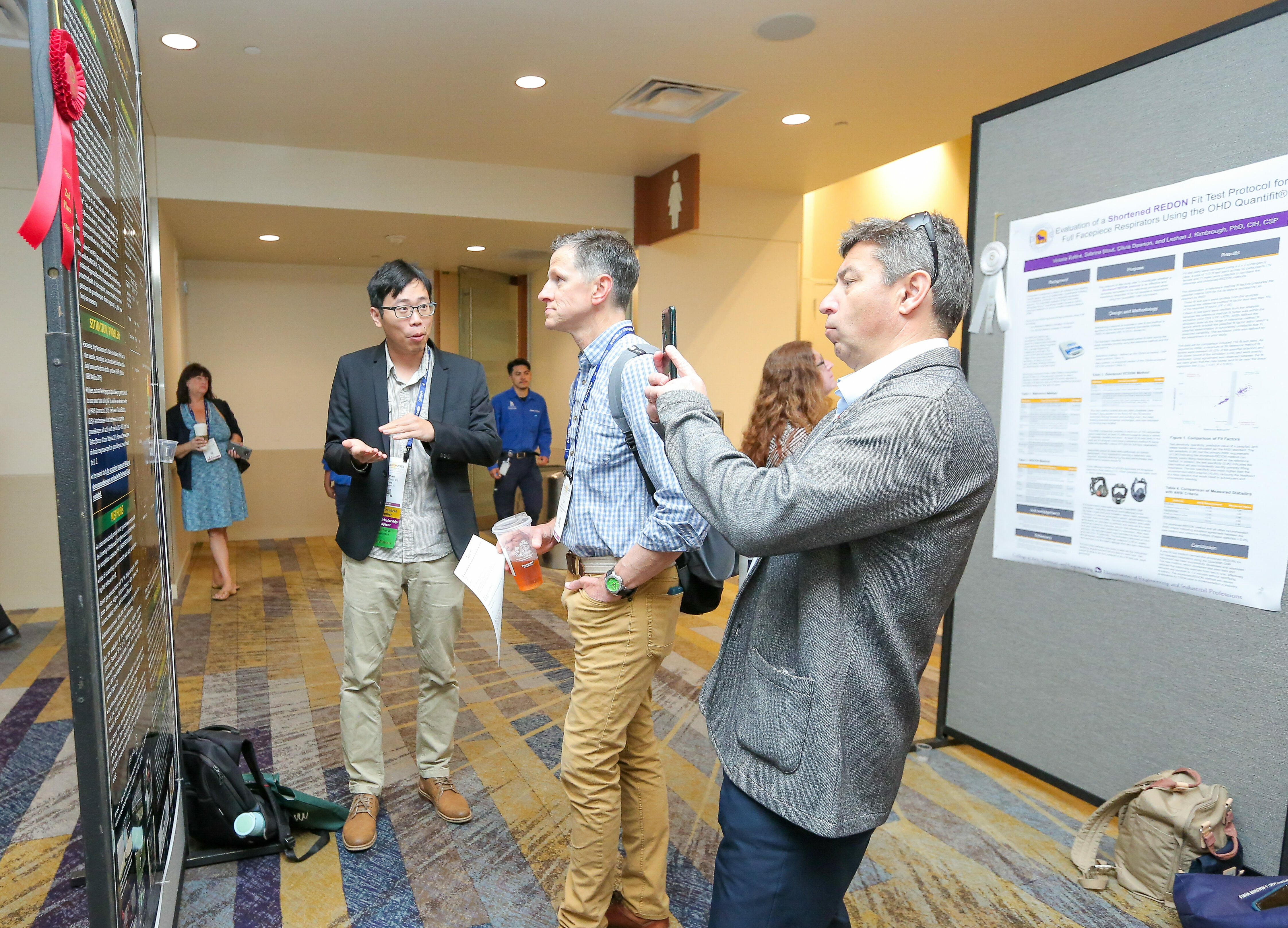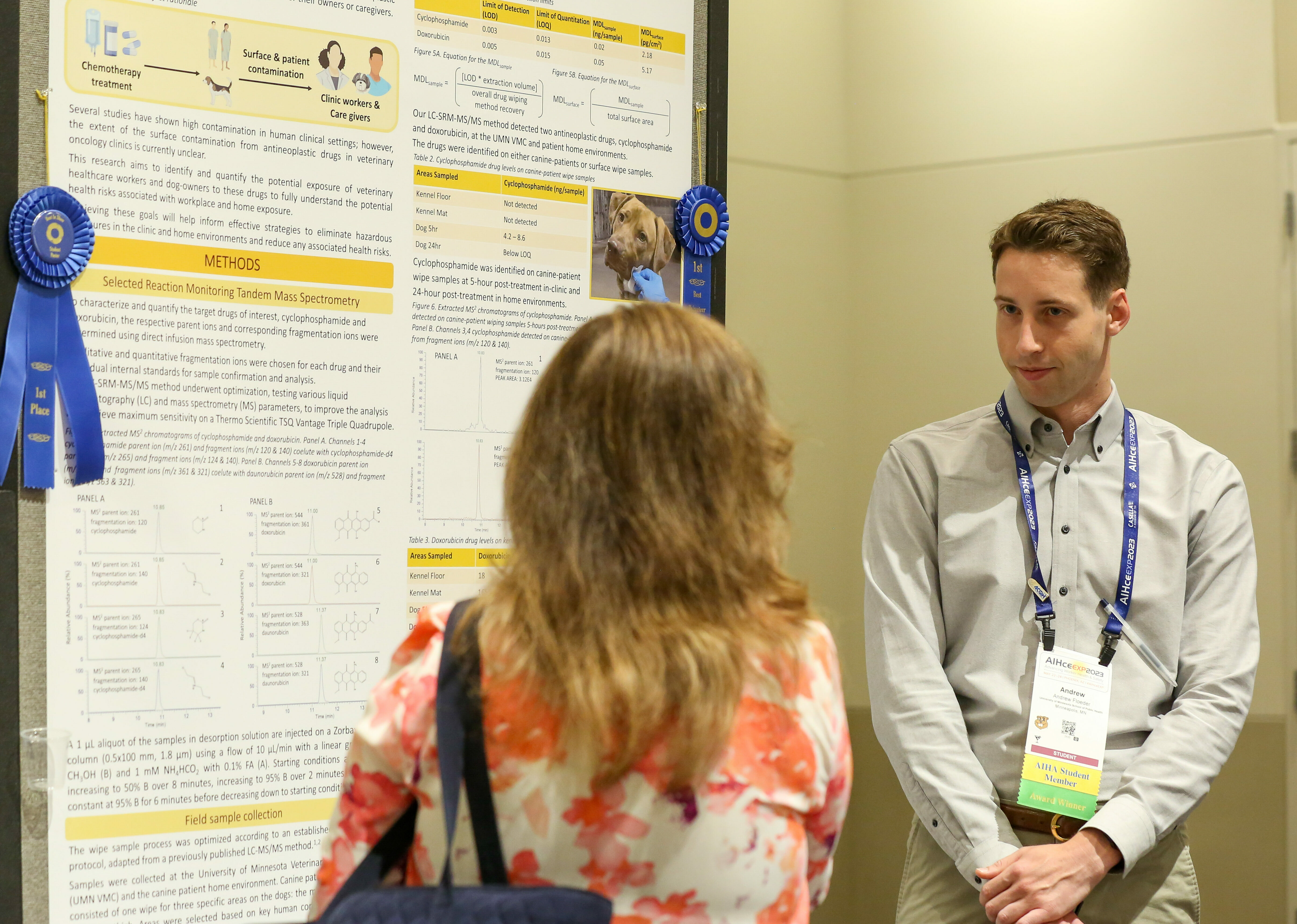
Poster Presenter Guidelines
DOWNLOAD AIHA Connect 2026 PPTPoster Presenter Guidelines
Author Attend Times
During your specific Author Attend Time, you must stand by your poster to discuss your research with attendees.
- Poster Session 1 - Professional: Monday, June 1; 2026; 2:00 p.m.-3:00 p.m. CT
- Poster Session 2 - Student: Tuesday, June 2, 2026; 10:00 a.m.-11:00 a.m. CT
- Poster Session 3 - Professional: Wednesday, June 3, 2026; 9:15 a.m.-10:15 a.m. CT
Poster Specifications & Suggestions
Accepted poster presenters should prepare posters with the following guidelines in mind:
The hard copy posters will be displayed on VERTICAL bulletin boards. The interior, usable space of the board measures 45" (wide) x 91" (tall) (114cm x 231cm). The recommended dimensions of your poster are 43" x 78" (109cm x 198 cm). Posters printed in horizontal layouts will be removed. A suggested poster template can be found here.
- Presenters are responsible for the development, printing, shipment, and display of all poster-related materials and any associated costs.
- Permanent adhesives are prohibited; pushpins will be provided on-site for mounting.
- Heavy boards or backing should not be used as they will not adhere to the display panels.
- Include the names of the authors, your faculty sponsor’s name, and the name of your academic institution.
- Your poster should include:
- The title of your accepted proposal
- Your name, and any other authors or mentors
- A description of research goals and methods
- A presentation of results
- A summary of major conclusions
- Future directions for the research
- A short bibliography or list of references
- Acknowledgments (citing any help received, mentors, or sources of funding)
- Color logo of your college or university (students only)
- Consider having your poster printed on recycled paper using environmentally friendly inks. Additionally, consider recording a short video presentation (5 minutes or less) to upload to the conference Virtual Platform to allow virtual participants to learn about your topic.
Poster Format
- The following VERTICAL design is suggested for your layout:

- Enhanced formats for academic and research posters may be found in the two videos below:
How to create a better research poster in less time (Generation 1)
How to create a better research poster in less time (Generation 2)
- The main job of a poster is to provide audiences with information on your research, but it can be a tricky balancing act to provide attendees with all the details while creating something visually pleasing. Using a QR code on your poster will allow viewers a place to go to view more details, without taking up space with numbers and words. QR codes can also be used to share your contact information, social media accounts, a YouTube video you’ve posted about your study, additional images, or links back to a website. Check out this link for more information and to generate and design a QR code for your poster: QR Code Generator
Poster Displays From Previous AIHA Connects
 |  |  |
Questions?
Contact Diana Kane at 703-846-0753.
What Makes a Good Poster?
Posters should attract the eye of passersby and present the main content in a succinct and quickly consumable format. Remember visual impact is important! Think through the following design considerations when creating your poster:
- Use large, uncomplicated fonts. The print should be legible from at least three to four feet away.
- Convey your information with colorful images and figures.
- Balance your text and images.
- Think of reader “gravity”—how the viewer’s eye tends to move from top to bottom and from left to right—and incorporate that flow into your design.
- Use headings, numbers, white space, or color frames to organize the information.
- Articulate the takeaway lessons in an understandable manner. While the poster serves as a visual aid while you talk, others may view it when you are not there.


